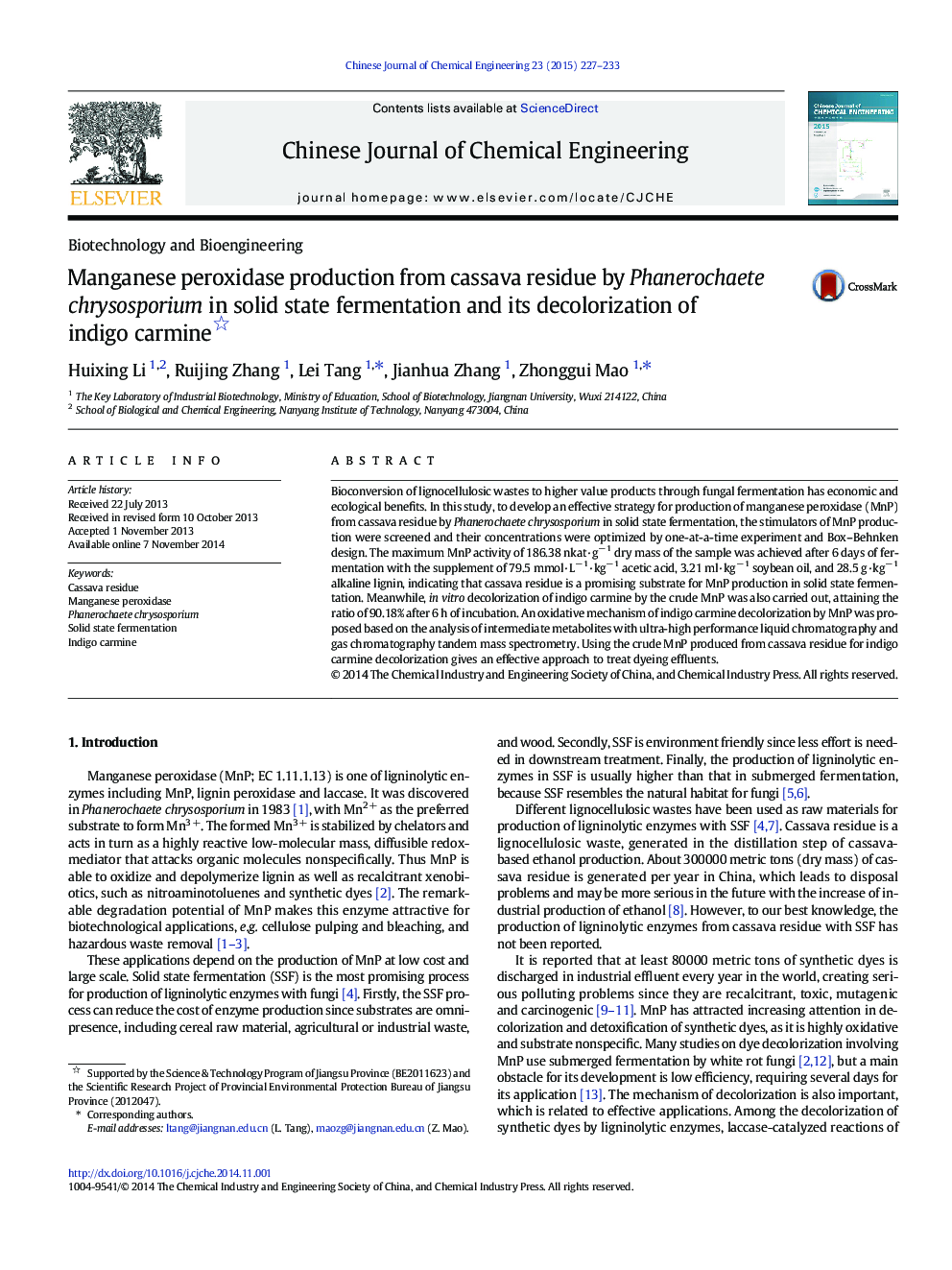| کد مقاله | کد نشریه | سال انتشار | مقاله انگلیسی | نسخه تمام متن |
|---|---|---|---|---|
| 168155 | 1423404 | 2015 | 7 صفحه PDF | دانلود رایگان |

Bioconversion of lignocellulosic wastes to higher value products through fungal fermentation has economic and ecological benefits. In this study, to develop an effective strategy for production of manganese peroxidase (MnP) from cassava residue by Phanerochaete chrysosporium in solid state fermentation, the stimulators of MnP production were screened and their concentrations were optimized by one-at-a-time experiment and Box–Behnken design. The maximum MnP activity of 186.38 nkat·g− 1 dry mass of the sample was achieved after 6 days of fermentation with the supplement of 79.5 mmol·L− 1·kg− 1 acetic acid, 3.21 ml·kg− 1 soybean oil, and 28.5 g·kg− 1 alkaline lignin, indicating that cassava residue is a promising substrate for MnP production in solid state fermentation. Meanwhile, in vitro decolorization of indigo carmine by the crude MnP was also carried out, attaining the ratio of 90.18% after 6 h of incubation. An oxidative mechanism of indigo carmine decolorization by MnP was proposed based on the analysis of intermediate metabolites with ultra-high performance liquid chromatography and gas chromatography tandem mass spectrometry. Using the crude MnP produced from cassava residue for indigo carmine decolorization gives an effective approach to treat dyeing effluents.
Cassava residue is a lignocellulosic waste, generated in the distillation of cassava-based ethanol production. The waste is a promising substrate for manganese peroxidase (MnP) production by Phanerochaete chrysosporium in solid state fermentation. In vitro decolorization of indigo carmine by the crude MnP was achieved. The pathway of indigo carmine decolorization by MnP is proposed as depicted in the figure above. Electrochemical oxidation of indigo carmine occurs first since sulfonic acid groups and amino-aromatic groups are oxidized by MnP catalysis. Then the oxidative compound is attacked by nucleophiles such as water molecules. Finally, another oxidation step degrades the products to form isatin since phenolic compounds are oxidized by hydrogen abstraction.Figure optionsDownload as PowerPoint slide
Journal: Chinese Journal of Chemical Engineering - Volume 23, Issue 1, January 2015, Pages 227–233